Economics of Electric Vs Diesel Traction – Fuel and Line Haul Cost
- Economics of Electric vs Diesel Traction on account of fuel cost is evaluated based on the rupees spend towards energy bill for hauling 1000 GTKM of load. The trend of electrical and diesel energy cost in terms of unit charges and Rs/litre as compiled in the annual statistical statement of Indian Railways is as follows:

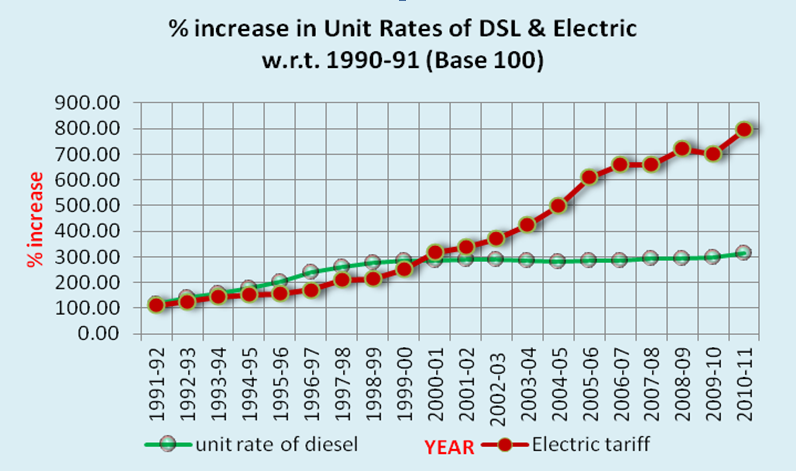
- There are some important points to be noted while understanding the trend of % increase during the last 20 years. During the first 10 years, diesel oil was subsidized whereas electricity unit rates was inflated to subsidies higher T&D losses and power supply to agricultural sector. The increasing trend of electricity unit charges were contained with the arrival of Indian Electricity Act 2001 and formation regulatory commission. Now it was not possible for State Electricity Board to increase unit charges unilaterally and unit rates contained almost at the same rate for next 10 years. Diesel prices are now governed based on international price of crude and exchange rate with almost negligible subsidy element.
- Similarly, line haul cost is the another indices calculating the cost of hauling 1000GTKM of traffic. This cost includes Maintenance and Operating cost of traction, Cost of maintenance of traction distribution equipment, Interest and depreciation or to say all that cost which is accounted and budgeted for hauling the load. For passenger and freight traffic, this unit cost is worked out seperately and the same for the last 20 years is as follows
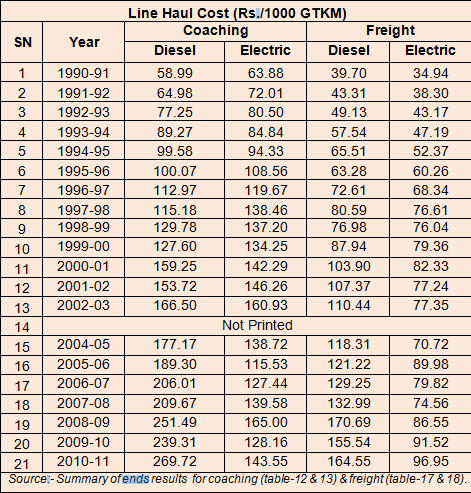
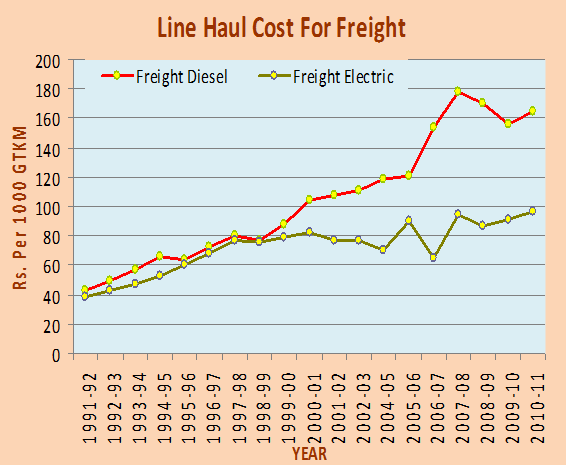
- It was for this reason that progress of electrification during X plan slowed down. as can be seen from the plan-wise progress of electrification. How the planner maintained for shortsighted approach towards electrification? Cost of Electrification is about 1.4Crs/Km for double line section as compared to construction of new line which is about 10 Crs/Km and return from new line is always had been very poor.
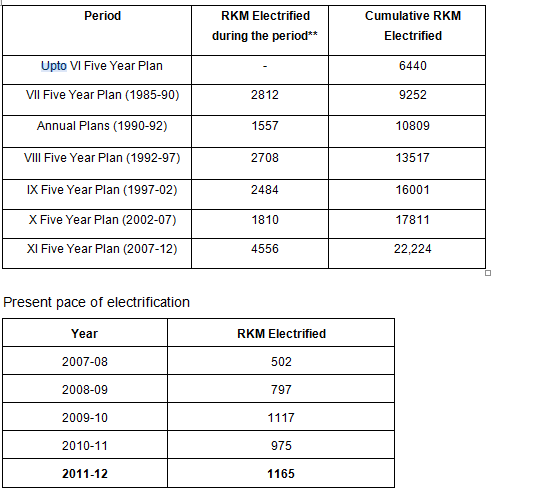
- In fact it is now only, the realization has set in that if Railway has to survive, it has to go for sustainable traction. This led to improvement of sanctioning of projects and progress also improved. Within next 5 years, important sections like Ahemdabad-Delhi. Itarsi-Allahabad, Ghaziabad-Saharanpur-Khurja etc. which will improve running, economics of travel etc.
21st Aug 2013
Rupees has touched Rs.64 a dollor. It will impact fuel bill of Indian Railways. There is a news in Business Line on 20th Aug 2013
http://www.thehindubusinessline.com/industry-and-economy/logistics/currencys-slide-a-red-flag-for-railways/article5042404.ece/
Amid plummeting rupee and rising global oil prices railways to hike freight rates in October
NEW DELHI: The plummeting rupee and rising global oil prices could force the Railways to hike its tariffs in October, the minister of state for Railways AdhirRanjanChowdhury said.
“Tariff has already been increased. As per the proposal of the budget, it will be hiked again in October,” said Chowdhury on the sidelines of an Assocham conference on Tuesday.
http://articles.economictimes.indiatimes.com/2013-08-28/news/41538672_1_passenger-fares-freight-tariff-fuel-adjustment-component
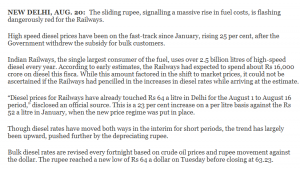
Dear sir good evening, hoping that you alongwith madam must be alright by the grace of God. I just now read ur article on Traction economics dt 25.07.13. I have one doubt plot in second chart i.e whether diesel or electric traction cost is rapidly increasing (kindly see the colour of line). Kindly clarify.
Article is very nicely written and is very informative
Dinesh Kumar
Sr Prof/IRIEEN
Graphs got interchanged..
u r right, there is by mistake
Good analysis.
.
What is the present cost of hauling 1000 GTKM by electric locomotive engine?